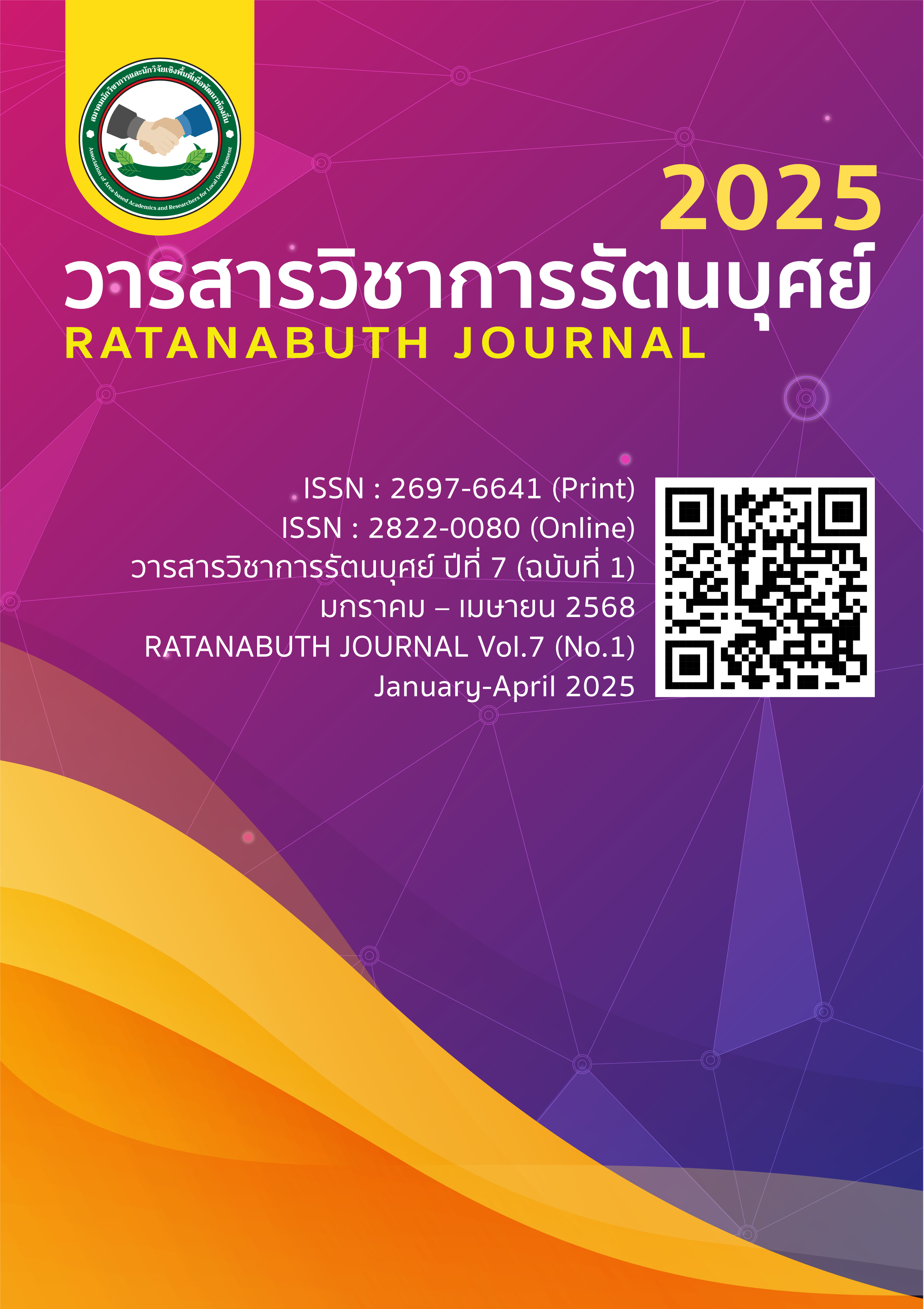สิงคโปร์กับการเป็นเจ้าภาพกีฬาเซียพเกมส์ ค.ศ.1973: การนำเสนอภาพลักษณ์ของชาติในด้านเอกภาพ การพัฒนาและมาตรฐานสากล Singapore and Hosting the 1973 SEAP Games: Representing the Image of a Nation in Unity, Development and International Standards
Main Article Content
บทคัดย่อ
หลังจากได้รับเอกราชเมื่อค.ศ.1965 สิงคโปร์ซึ่งมีข้อจำกัดเรื่องทรัพยากรและขนาดเศรษฐกิจของประเทศจำเป็นต้องให้ความสำคัญต่อการพัฒนาเศรษฐกิจเป็นประเด็นหลักของประเทศ และละเลยการให้ความสำคัญต่อมิติอื่นๆ ที่ไม่เกี่ยวข้องกับการพัฒนาเศรษฐกิจลงไป โดยเฉพาะกิจกรรมด้านกีฬาที่รัฐบาลสิงคโปร์มองว่ามิใช่เรื่องที่จำเป็นต่อประเทศ อย่างไรก็ตามในช่วงเวลานี้สิงคโปร์ต้องรับหน้าที่เป็นเจ้าภาพจัดการแข่งขันกีฬาระหว่างประเทศรายการสำคัญในภูมิภาคเอเชียตะวันออกเฉียงใต้ คือ กีฬาเซียพเกมส์ ค.ศ.1973 ซึ่งเป็นครั้งแรกที่สิงคโปร์เป็นเจ้าภาพจัดการแข่งขันกีฬาระหว่างประเทศ ในการนี้บทความเรื่อง “สิงคโปร์กับการเป็นเจ้าภาพกีฬาเซียพเกมส์ ค.ศ.1973: การนำเสนอภาพลักษณ์ของชาติในด้านเอกภาพ การพัฒนาและมาตรฐานสากล” ซึ่งศึกษาด้วยระเบียบวิธีทางประวัติศาสตร์มีวัตถุประสงค์เพื่อศึกษาว่ารัฐบาลสิงคโปร์ซึ่งมิได้ให้ความสำคัญต่อกิจกรรมด้านกีฬามากนักได้ดำเนินการจัดการแข่งขันกีฬานานาชาติครั้งดังกล่าวอย่างไร และใช้การเป็นเจ้าภาพการแข่งขันครั้งนั้นนำเสนอภาพลักษณ์ของประเทศอย่างไร ผลการศึกษาพบว่าแม้ผู้นำรัฐบาลสิงคโปร์ในขณะนั้นมิได้ให้ความสำคัญกับกิจกรรมที่เกี่ยวข้องการกีฬาในประเทศมากนัก แต่เมื่อมีโอกาสจัดการแข่งขันกีฬาเซียพเกมส์ค.ศ.1973 ซึ่งเป็นการแข่งขันกีฬานานาชาติที่สำคัญ ทางการสิงคโปร์กลับทุ่มงบประมาณและความสนใจต่อการจัดการแข่งขันและใช้พื้นที่ของการแข่งขันกีฬาครั้งดังกล่าวเพื่อนำเสนอภาพลักษณ์ของสิงคโปร์ในเรื่องการเป็นชาติเอกราชเกิดใหม่ที่มีเอกภาพ การพัฒนาประเทศอย่างรวดเร็ว และการเข้าถึงมาตรฐานสากลเทียบเท่ากับชาติที่เจริญแล้วซึ่งแนวทางเหล่านี้มีส่วนเผยแพร่ภาพลักษณ์ของชาติที่สอดคล้องกับแนวทางในการพัฒนาประเทศของรัฐบาลสิงคโปร์ในเวลาดังกล่าว
Article Details

This work is licensed under a Creative Commons Attribution-NonCommercial-NoDerivatives 4.0 International License.
References
กนิษฐา จานเขื่อง. (2547). นโยบายการเคหะแห่งชาติกับการพัฒนาประเทศสิงคโปร์ (ค.ศ. 1960–2000). วารสารศิลปศาสตร์ คณะศิลปศาสตร์ มหาวิทยาลัยธรรมศาสตร์, 4(1), 99–120.
มติชน. (2567). เปิดอันดับพาสปอร์ตทรงอิทธิพล 2024. มติชน. สืบค้นเมื่อ 12 พศจิกายน 2567 จาก https://www.matichon.co.th/foreign/news_4369978.
อรวรรณ นักปราชญ์, & วทัญญู ใจบริสุทธิ์. (2567). ประวัติศาสตร์การพัฒนาเศรษฐกิจของสิงคโปร์: จากเศรษฐกิจเมืองท่าสู่การผลิตเพื่ออุตสาหกรรมทดแทนนำเข้า. วารสารวิชาการมหาวิทยาลัยหอการค้าไทย มนุษยศาสตร์และสังคมศาสตร์, 44(1), 95–116.
Abshire, J. E. (2011). The history of Singapore. Santa Barbara, CA: Greenwood.
Aplin, N. (2016). Sport in Singapore (1945–1948): From rehabilitation to Olympic status. The International Journal of the History of Sport, 33(12), 1361–1379.
Aplin, N. (2019). Sport in Singapore: The colonial legacy. Singapore: Straits Times Press.
Blackburn, K. (2023). The role of state Shinto and sport in integrating Singapore into the Japanese empire, 1942–45. Journal of Southeast Asian Studies, 54(4), 645–666.
Chan, Y. K. (2016). “Sports is politics”: Swimming (and) pools in postcolonial Singapore. Asian Studies Review, 40(1), 17–35.
Chandran, R., & Fong, L. (1973, July 22). Our goal in sports: Mr. Lee. The Straits Times, p. 1.
Chew, E. C. T., & Lee, E. (2557). ประวัติศาสตร์สิงคโปร์ (เพ็ชรี สุมิตร, ผู้แปล). กรุงเทพฯ: มูลนิธิโครงการตำราสังคมศาสตร์และมนุษยศาสตร์.
Creak, S. (2020). New regional order: Sport, cold war culture and the making of Southeast Asia. In R. Edelman & C. Young (Eds.), The whole world was watching: Sport in the cold war (pp. 189–204). Stanford, CA: Stanford University Press.
Creak, S. (2015). Embodied nation: Sport, masculinity, and the making of modern Laos. Honolulu: University of Hawai‘i Press.
Cruz, N. D., & Smith, B. (2022). History, politics and the place of elite sports. In N. D. Cruz (Ed.), Cultural sport psychology and elite sport in Singapore: An exploration of identity and practice (pp. 34–42). London & New York: Routledge.
Frida, E. (1971, November 15). Singapore to bid for 1973 SEAP Games. The Straits Times, p. 26.
Frida, E. (1972, August 10). All want S'pore to stage A-Games. The Straits Times, p. 22.
Frida, E. (1973, August 30). Thai team is weak Charouck. The Straits Times, p. 22.
Hayase, S. (2020). Sports and nationalism in Southeast Asia: SEAP Games/Sea Games, 1959–2019. Journal of Asia Pacific Studies, 40, 1–25.
Horton, P. (2013). Singapore: Imperialism and post-imperialism, athleticism, sport, nationhood and nation-building. The International Journal of the History of Sport, 30(11), 1221–1234.
Horton, P. A. (1997). 'Padang or Paddock': A comparative view of colonial sport in two imperial territories. The International Journal of the History of Sport, 14(1), 1–20.
Horton, P. A. (2003). Shackling the lion: Sport and modern Singapore. In J. A. Mangan & F. Hong (Eds.), Sport in Asian society: Past and present (pp. 198–224). London: Frank Cass Publishers.
Huebner, S. (2016). Pan-Asian sports and the emergence of modern Asia 1913–1974. Singapore: NUS Press.
Huff, W. G. (1987). Patterns in the economic development of Singapore. The Journal of Developing Areas, 21(3), 305–326.
Lim, P. H., & Aman, M. S. (2016). The history of the South East Asian Peninsular Games, 1959–1975. The International Journal of the History of Sport, 33(5), 545–568.
New Nation. (1971, December 14). Stage set for 1973 SEAP. New Nation, p. 15.
New Nation. (1972, August 8). Outlook – It's better days ahead. New Nation, p. 18.
New Nation. (1973, July 10). Arriving for opening of stadium. New Nation, p. 12.
New Nation. (1973, July 17). New era for sports in Singapore. New Nation, p. 6.
New Nation. (1973, August 30). Thailand to see SEAP 'live'. New Nation, p. 1.
Seneviratane, P. (1972, August 9). Our sporting 'pleasure dome'. The Straits Times, p. 14.
Swinsted, G. (1971, December 13). SEAP Games doomed? New Nation, p. 15.
The Straits Budget. (1948, March 25). Colony invited to Olympics. The Straits Budget, p. 11.
The Straits Times. (1948, July 16). Valberg popular at Olympic camp. The Straits Times, p. 8.
The Straits Times. (1951, January 5). Colony team to games will get govt. aid. The Straits Times, p. 12.
The Straits Times. (1972, January 19). An August date for 1973 SEAP Games proposed. The Straits Times, p. 26.
The Straits Times. (1972, May 19). SEAP Games Council get down to work. The Straits Times, p. 30.
The Straits Times. (1972, June 3). Six experts to plan the games. The Straits Times, p. 28.
The Straits Times. (1972, June 9). Games village will be like luxury hotel. The Straits Times, p. 27.
The Straits Times. (1973, March 15). National team to stay in sports village for-games. The Straits Times, p. 7.
The Straits Times. (1973, September 10). Great sports. The Straits Times, p. 8.
Turnbull, C. M. (1989). A history of Singapore, 1818–1988 (2nd ed.). New York: Oxford University Press.

